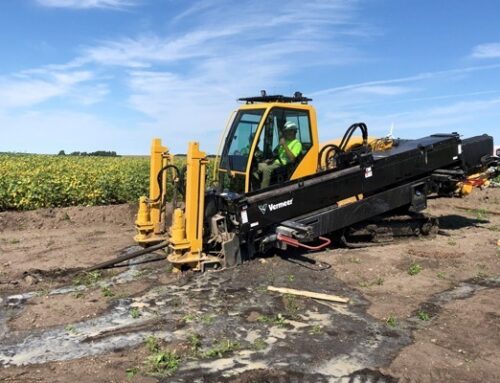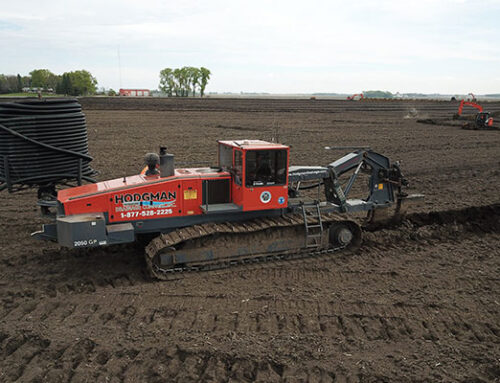You can use the best equipment, but if your field holds too much water, you’ll fight the ground instead of working with it. Minnesota’s weather changes fast. One wet week or cold snap can ruin your plans.
Tiling isn’t about working the surface. It’s about setting the stage underground so your field can breathe again. It’s the quiet start of your growing season—the moment your ground is ready to support everything that follows.
But when is the right time to do it? No one understands that better than an experienced field tiling company in MN.
The Role of Field Tiling in Healthy Soil
Tiling helps your soil breathe again. Moving excess water out brings air back into the root zone and keeps moisture levels steady. Healthy, well-drained soil gives roots room to spread and grow strong.
A field tiling company in Minnesota can help you understand what your land needs. Every field is different—clay soil, sandy ground, low spots, or drainage issues affect how and when you should tile.
Watch the Soil, Not Just the Calendar | Field Tiling Company in MN
Many farmers start as soon as the snow melts, but rushing can harm the soil. Wet ground compacts easily, and frozen layers can crack tiles.
Wait until the top few inches are dry but still hold a bit of moisture below. That’s when the soil supports your equipment without packing down. Too early, and you’ll trap water. Too late, and planting season slips by.
Read the Sky Before the Soil
Rain and frost are the biggest factors in Minnesota tiling. Heavy spring rains can delay work for weeks, and frost can harden the top layer and ruin your timing if you start too soon.
Tiling wet soil can create ruts, hard clods, and uneven seedbeds. Tiling frozen soil can harm your drainage system. Waiting for a short dry spell can save you days of repair later.
This is why experienced farmers and field tiling companies plan around the weather first. They don’t rush it; they read it.
Also Read: The Long-Term Benefits of Investing in Field Tiling
The Soil Type Test | Field Tiling Company in MN
Minnesota soil isn’t all the same. Northern regions often have heavier clay, while southern farms may have lighter, loamier soil. Clay needs more drying time. Loam can usually be tiled sooner.
If your field holds water after rain, it’s better to wait. If your soil drains fast, you can start earlier. The key is patience. Healthy soil is built by timing, not force.
A professional field tiling company in MN studies your soil type, slope, and drainage pattern before deciding when to start. That careful observation helps avoid compaction and keeps your soil structure strong for years.
Fall vs. Spring: Which Is Better?
Some Minnesota farmers prefer fall tiling, which lets soil settle over winter and speeds up spring planting. Others wait for spring because it protects the soil from erosion during the snowy months.
There’s no single correct answer. It depends on your soil and drainage setup. Fall tiling works well if your field drains properly, but spring tiling is safer if you worry about runoff or erosion.
Whichever you choose, make sure your soil is ready. A rushed tiling job can cause problems that last all season.
Tools That Make Timing Easier
Modern field tiling uses GPS systems, soil sensors, and moisture meters to guide farmers. These tools tell you exactly when your field is ready.
Technology doesn’t replace experience, though. It adds to it. The best results come when you trust both your tools and your instincts.
Let the Land Tell You When It’s Ready | Field Tiling Company in MN
Every field speaks—through the feel of the soil, the look of the surface, and the weight under your boots. The right time isn’t on a calendar; it’s in your land.
Listen to your soil. Wait for it to warm and dry. When ready, your crops will thank you with strong roots and full yields.
Hodgman Drainage is here to help you keep your fields well-drained, healthy, and ready for planting.
Call (507) 528-7065 to connect.


